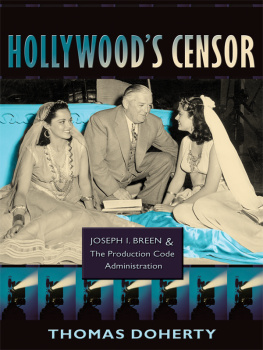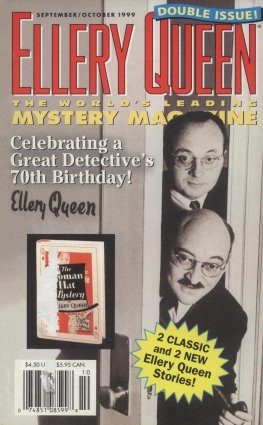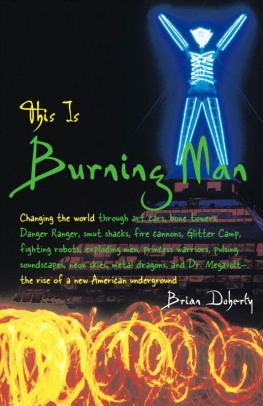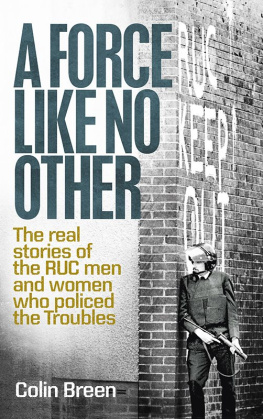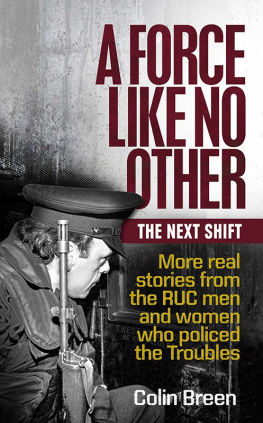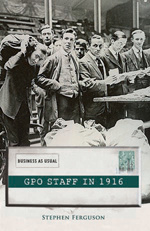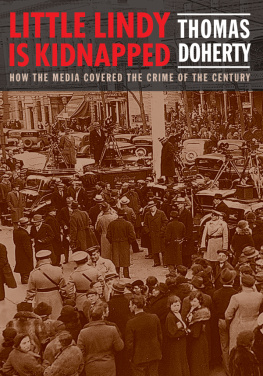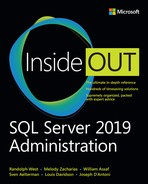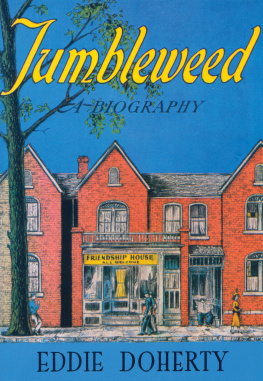Doherty Thomas - Hollywoods Censor: Joseph I. Breen and the Production Code Administration
Here you can read online Doherty Thomas - Hollywoods Censor: Joseph I. Breen and the Production Code Administration full text of the book (entire story) in english for free. Download pdf and epub, get meaning, cover and reviews about this ebook. year: 2007, publisher: Columbia University Press, genre: Detective and thriller. Description of the work, (preface) as well as reviews are available. Best literature library LitArk.com created for fans of good reading and offers a wide selection of genres:
Romance novel
Science fiction
Adventure
Detective
Science
History
Home and family
Prose
Art
Politics
Computer
Non-fiction
Religion
Business
Children
Humor
Choose a favorite category and find really read worthwhile books. Enjoy immersion in the world of imagination, feel the emotions of the characters or learn something new for yourself, make an fascinating discovery.
- Book:Hollywoods Censor: Joseph I. Breen and the Production Code Administration
- Author:
- Publisher:Columbia University Press
- Genre:
- Year:2007
- Rating:4 / 5
- Favourites:Add to favourites
- Your mark:
- 80
- 1
- 2
- 3
- 4
- 5
Hollywoods Censor: Joseph I. Breen and the Production Code Administration: summary, description and annotation
We offer to read an annotation, description, summary or preface (depends on what the author of the book "Hollywoods Censor: Joseph I. Breen and the Production Code Administration" wrote himself). If you haven't found the necessary information about the book — write in the comments, we will try to find it.
Doherty Thomas: author's other books
Who wrote Hollywoods Censor: Joseph I. Breen and the Production Code Administration? Find out the surname, the name of the author of the book and a list of all author's works by series.
Hollywoods Censor: Joseph I. Breen and the Production Code Administration — read online for free the complete book (whole text) full work
Below is the text of the book, divided by pages. System saving the place of the last page read, allows you to conveniently read the book "Hollywoods Censor: Joseph I. Breen and the Production Code Administration" online for free, without having to search again every time where you left off. Put a bookmark, and you can go to the page where you finished reading at any time.
Font size:
Interval:
Bookmark:
HOLLYWOOD'S CENSOR
Columbia University Press
Publishers Since 1893
New York Chichester, West Sussex
cup.columbia.edu
Copyright 2007 Columbia University Press
All rights reserved
E-ISBN 978-0-231-51284-8
Library of Congress Cataloging-in-Publication Data
Doherty, Thomas Patrick,
Hollywoods censor : Joseph I. Breen and the Production Code
Administration / Thomas Doherty.
p. cm.
Includes bibliographical references and index.
ISBN 978-0-231-14358-5 (cloth : alk. paper)
1. Motion picturesCensorshipUnited StatesHistory. 2. Breen, Joseph Ignatius, 18901965. I. Title.
PN1995.62.D64 2007
791.430973dc22 2007026146
A Columbia University Press E-book.
CUP would be pleased to hear about your reading experience with this e-book at .

W hat follows is not a biography of Joseph I. Breen but a cultural history of Hollywood and America with the life and character of Breen as the spine of the story. Along the way, Catholic priests, Jewish moguls, visionary auteurs, studio hacks, hardnosed journalists, and bluenose agitators will be clashing over the great art of the twentieth century, classic Hollywood cinema, during its high renaissance between the arrival of sound and the rise of television.
Though not certified by a Code Seal, the following production has an extensive credit list. Two players warrant top billing: Mary Pat Dorr, Joseph Breens granddaughter, who graciously shared her memories of a doting grandfather and generously granted permission, with no strings attached, to quote from his private correspondence; and Barbara Hall, head of Special Collections at the Margaret Herrick Library of the Academy of Motion Picture Arts and Sciences, a fellow Breeniac who shared her unmatched expertise in matters Production Code. Martin S. Quigley, Pat Breen, Albert Van Schmus, and Monsignor Francis Weber patiently answered questions about the man they knew. Leonard Leff offered advice and research materials. Charles Maland lent his keen eye to the manuscript.
A number of kind scholars, researchers, and archivists provided invaluable guidance: Gregory Beal, Bob Dickson, Shawn Guthrie, Kristine Kreuger, and Linda Mehr at the Margaret Herrick Library and AMPAS; Nicholas B. Scheetz and Scott S. Taylor at Special Collections at Georgetown University; Rev. William Mugan, S.J., Nancy Merz, and Mary Struckel at the Midwest Jesuit Archives; Don H. Buske at the Historical Archives of the Archdiocese of Cincinnati; Julie Satzik at the Archdiocese of Chicagos Joseph Cardinal Bernardin Archives and Records Center; W. John Shepherd at the Catholic History Research Center and University Archives at the Catholic University of America; Sean Delaney at the British Film Institute; Pat McAvinue at the Drexel Library at St Josephs University; Patrice M. Kane at Fordham University Library; Benjamin Singleton at the News-film Library at the University of South Carolina; Matthew J. Olsen at the National Archives and Records Administration, College Park, Maryland; Patrick McNamara at the Archdiocese of Brooklyn Archives; Neil Bethke, at Archives and Special Collections at Loyola Marymount University; David Pavelich at the Special Collections Research Center at the University of Chicago; Wayne Dowdy at the Memphis Public Library; Colin Varga and Shawn Weldon at the Archdiocese of Philadelphia Archives; Rev. Joseph Bongard at Roman Catholic High School in Philadelphia; Ron Simon at the Paley Center for Media; and Madeline Matz, Rosemary Hanes, and Joe Belian at the Motion Picture Division of the Library of Congress. At Columbia University Press, Jennifer Crewe and Roy Thomas guided the manuscript and encouraged the author.
I also deeply appreciate all the friends who kibitzed, criticized, listened with good grace, and allowed themselves to be exploited for off-the-cuff research assistance: Matthew Bernstein, Sheri Chinen Biesen, Devin Carney, Julia Crantz, Lisa Debin, Andrew Hudgins, Rick Jewell, Ross Melnick, John Raeburn, Luke Salisbury, Maayan Zack, and all my colleagues at Brandeis University, especially Jacob Cohen for his thoughtful comments. Again, and above all, I owe my wife Sandra more than I can express.
Finally, Id like to thank the members of the Academy for an Academy Film Scholars Grant and the opportunity to say the first part of this sentence.
O n March 25, 1954, from the stages of the RKO Pantages Theater in Hollywood and the Center Theater in New York, the Academy of Motion Picture Arts and Sciences presented its annual award ceremoniesthe Oscars, live, on television. For only the second time in the Academys twenty-six-year history, video was crashing the party, and NBC had sent out open invitations courtesy of another dream factory (Oldsmobile brings you the famous Academy Awards Presentation!). The come-on blurb in a new weekly publication called TV Guide had already realigned its screen priorities: will be among those presenting the Oscars.
Viewed via the washed-out kinescope that has preserved the evening, and measured against twenty-first-century standards of global saturation and glitzy excess, the festivities in 1954 look dressed-down and low-tech, the production numbers mechanical and martial, short on sizzle and skimpy on skin. The musical highlight was a modest vignette in a faux dinner club, featuring Dean Martin crooning a bourbon-smooth version of Thats Amore from The Caddy (1953), the latest box office hit from the golden comedy duo of Martin and Lewis. (Dinos jukebox evergreen lost out to the treacly Three Coins in a Fountain.) In terms of sheer tonnage, the most elaborate choreography was reserved for a chorus line of behemoth Oldsmobiles parked on stage for the live commercials.
No matter. Still entranced by the novelty of bicoastal telecasts transmitted direct into the living room, Americans were thrilled to peek through the keyhole of the camera and spy on the glamour of a legendary Hollywood ritual. Of course, within the executive suites at NBC, the motives were less starstruck: advertising revenues might not recoup the costs of mounting the extravaganza, but the medium was selling more than any individual show. It was selling itself, betting on dividends down the line from a longterm investment in a blue-chip futures market. For the television industry, the Oscar ceremonies were a prize catch. For the motion picture industry, the incursion of video was a portent of things to come.
A dollop of controversy shadowed the telecastnot over the nominated films, or a scandalous gown, or an incendiary acceptance speech, but over the very fact that the hottest ticket in Hollywood was being squandered on the archrival. last night to watch this great show on television, confessed a depressed motion picture exhibitor the next morning. Im sure that millions of people (this mornings papers say about 43,000,000) did the same thing. Certainly the empty seats in the theaters across the country prove that these figures are correct. Not so long ago, the moving-image competition had been derided and disdained. Television is nothing but rehearsals, the effete theater critic Addison DeWitt scoffed in Joseph Mankiewiczs All About Eve (1950), summing up Broadways, and Hollywoods, high-hat attitude to the small screen. But with Milton Berles madcap variety hour and the Friday Night Fights (also known as Texaco Star Theater and The Gillette Cavalcade of Sports) beaming topnotch, no-cost entertainment into private homes and public bars, the lofty superiority and smug complacency soon gave way to frayed nerves and furrowed brows. To the theater operators who manned the front lines and endured personal rejection at the box office window, ushering television into the Oscar ceremonies was the moral equivalent of trading with the enemy. Ornate motion picture palaces and 600-seat theaters alikevenues once filled to the rafters with sniffling matrons, snuggling couples, and popcorn-munching moppets sitting rapt before a womens weepie, a screwball comedy, or a matinee shoot-em-upwere left sparse and vacant, shells of their former selves. Why give lapsed moviegoers another reason to stay home and watch movie stars on televisionfor free!instead of making them pay for the privilege down at the local Bijou?
Next pageFont size:
Interval:
Bookmark:
Similar books «Hollywoods Censor: Joseph I. Breen and the Production Code Administration»
Look at similar books to Hollywoods Censor: Joseph I. Breen and the Production Code Administration. We have selected literature similar in name and meaning in the hope of providing readers with more options to find new, interesting, not yet read works.
Discussion, reviews of the book Hollywoods Censor: Joseph I. Breen and the Production Code Administration and just readers' own opinions. Leave your comments, write what you think about the work, its meaning or the main characters. Specify what exactly you liked and what you didn't like, and why you think so.

